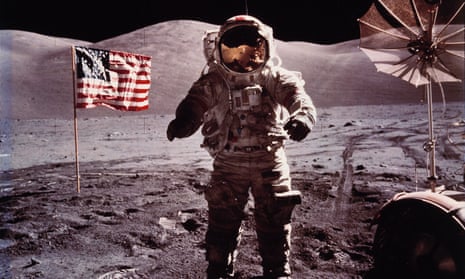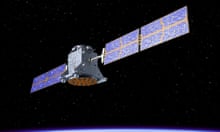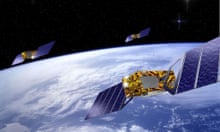It’s funny the things that geeks notice. I’ve been a keen photographer since I was a teenager and so one of the fascinating aspects for me about the Apollo programme was the cameras that the astronauts used on their missions. On Apollo 11, the first moon landing, for example, they had three Hasselblad 500ELs.
Why is this interesting? Well, in those days, Hasselbads were – and remain– ferociously expensive devices. But the final straw came with Apollo 17, the final moon landing, when the commander, Eugene Cernan, left his Hass behind on the lunar surface, where it remains to this day. Even in the context of a space mission that was fabulously expensive, the casual abandonment of such a beautiful, precision-engineered instrument looked – to those of us who thought about these things – like a criminal act.
It’s only now, with the benefit of hindsight, that we can understand why Hasselblad cameras were relatively small beer to Nasa. It turns out that by comparison with the other optical technologies deployed on the mission, they were actually rather primitive devices. What we didn’t know was that the site chosen for the lunar landing had been chosen by cameras deployed in a set of unmanned reconnaissance satellites that had endlessly surveyed the moon’s surface for two years beforehand. And the astonishing capabilities of these satellites were among the best-kept secrets of the cold war.
The story of these lunar orbiters and their photographic output has been recently told by a young English student, Ryan Smith, in a fascinating post on his blog. The images were shot on 70mm Kodak film, which was then developed and scanned on board the satellite. The resulting scans were then beamed down to three stations in Spain, Australia and California, where they were recorded on to magnetic tapes using Ampex tape drives similar to the machines on which the BBC originally recorded its TV programmes.
The images of the moon’s surface coming down from the orbiters were of astonishingly high resolution, good enough to blow up to 40ftx54ft pictures. When Nasa engineers initially stitched the images together they had to hang them in a church to view them. Eventually, they found a hangar where they could be laid on the ground for astronauts to walk on them in stockinged feet in order to search for suitable landing sites.
For decades, nobody outside of Nasa and the US military knew how good these images were. The few that were released for public consumption were heavily degraded and fuzzy. Why? Because the cameras used in the lunar orbiters were derivatives of the cameras used in high-altitude US aerial reconnaissance planes and satellites and the Pentagon didn’t want the Soviets to know the level of detail that could be derived from them.
In a way, we shouldn’t be surprised by this revelation. It’s an old story: powerful states have often possessed more sophisticated surveillance technology than their adversaries – or their citizens – knew or suspected. One of the reasons Edward Snowden’s revelations in 2013 were so shocking was that they demonstrated the astonishing scale and comprehensiveness of the NSA’s surveillance capabilities. No human communications seemed beyond the agency’s reach, it seemed, and everything it collected was logged and stored.
This gap between public perception and technological reality does not just apply to surveillance, though. The Global Positioning System (GPS) is a good example. It was developed by the US Department of Defense for military use, is owned by the US government and operated by the US air force. Its original application was to enable American nuclear submarines to get an accurate fix of their position before launching missiles. But for a period after it was opened up to civilian use in the 1980s, the non-military service was degraded so that it had lower resolution.
Because GPS is owned by the US government, it could be turned off at any time, which has spurred other countries to develop their own versions. Russia has Glonass, the Chinese have Beidou and the Indians have IRNSS. And to bring things closer to home, the EU and its partners are developing Galileo to provide an independent, high-precision positioning system so that European nations do not have to rely on the Russian, Chinese or US GPS systems, which could be arbitrarily disabled or degraded by their operators.
One of the possible implications of Brexit is that the UK will be shut out of the high-security functions of Galileo, which means that we would be in the same position as those of us who once marvelled at the early fuzzy pictures of the moon published by Nasa. You can see why the Brexiters are so annoyed by the prospect of not being able to navigate accurately. Serves them right.
What I’m reading
The Making of an Online Moral Crisis
Wonderful analysis by the Atlantic’s Alexis Madrigal of how the cruelty of Trump’s anti-immigrant stance finally went viral and, as far as we can see, was finally brought home to millions of Americans.
Break up Google
This editorial in the Boston Globe is an interesting straw in the wind. It suggests that the penny is beginning to drop, ie the realisation that society is going to have to do something radical to curb the power of the digital giants.
Donald Trump Goes Rogue
Prescient New Yorker piece by George Packer that nails the significance of Trump’s renunciation of the G7 summit and sets it in a wider historical context. The postwar international order is ending and it’s time we got used to that. There’s a sobering echo of this in Tyler Cowen’s recent Bloomberg column too.









